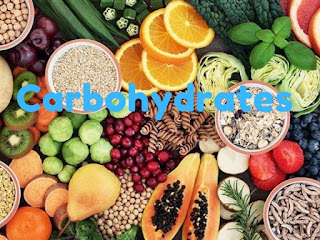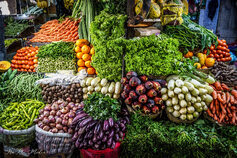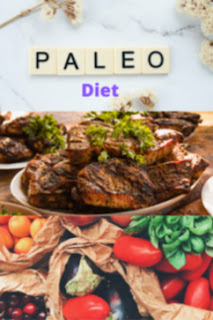The irritable bowel syndrome diet is a collection of guidelines for reducing the symptoms of irritable bowel syndrome, which include constipation and diarrhoea.
The irritable bowel syndrome diet was not created by a single person or group. Instead, it arose through gastroenterologists, nutritionists, and their IBS patients' studies, observations, trials and errors.
Irritable bowel syndrome is a condition in which the gut (bowel) looks normal but does not work properly. The disorder is fairly widespread, but no one knows its root cause.
IBS is characterised by abdominal pain or discomfort, bloating, a lot of gas (flatulence), diarrhoea, constipation, or alternating spells of both. Symptoms come and go, and their severity can change over time in a single person. Despite the fact that diet does not induce IBS, certain foods can exacerbate symptoms.
These foods vary from one person to the next. Alcohol, dairy products, caffeine-containing beverages, and the artificial sweeteners sorbitol and mannitol are all common food triggers. The IBS (Inflammatory Bowel Syndrome) is diet is meant to prevent meals that cause symptoms and to encourage the consumption of foods that aid in the correction of diarrhoea and constipation, as well as the reduction of gas.
The goal of the irritable bowel syndrome diet is to help people gain control over their IBS symptoms and thereby enhance their quality of life. This diet poses a two-fold problem. First, while constipation and diarrhoea have opposite effects, they can both occur in the same person as part of the same disease.
Constipation occurs when food remains in the large intestine (colon) for an extended period of time. When the body retains too much water, the stool (waste) in the large intestine becomes hard, dry, and difficult or unpleasant to pass. Food passes too quickly through the big intestine when you have diarrhoea. There isn't enough water reabsorbed. Stools are loose and watery, and the person may feel compelled to go to the bathroom.
The second problem with this diet is that people with IBS can have diverse reactions to the same foods. The IBS diet is a group of suggested foods that the individual must personalise via trial and error, rather than a list of "must eat" and "must not eat" items. Keeping a meal journal might assist an IBS sufferer to figure out which foods are useful and which aggravate symptoms.
Diet with high fibre and low fats
Dietary fibre refers to a collection of indigestible carbohydrate-based substances that can be found within plants. They are the ingredients that provide stiffness and structure to the plant. The IBS diet is high in fibre and low in fat. Fibre is important for controlling the quality of stool in the colon, and decreasing fat consumption is both healthy and prevents counteracting fibre's activities. Roughage and bulk are other terms for fibre.
Insoluble fibre and soluble fibre are two forms of fibre that are crucial for human health. Insoluble fibre is a type of fibre that passes through the digestive system almost unchanged. It isn't metabolised and doesn't give you any energy (calories). Fibre gives faeces bulk, which aids in their passage through the large intestine. It also holds water, allowing the stool to stay soft and simple to pass. It can aid in the trapping of excess water in patients suffering from diarrhoea.
Fibre RDIs (Recommended Daily Intakes)
Men under the age of 50: 38 milligrammes
women under the age of 50: 25 g
30 grammes for men aged 51 and up
women above the age of 51: 21 grammes
5 grammes plus at least one gramme for each child year of birth
Whole grains and foods produced from whole grains, such as oatmeal, are high in insoluble fibre. whole wheat bread and pasta, couscous, or bulgur are all good options.
breakfast cereals with bran and bran, rice (brown), carrots and cucumbers also contain insoluble fibre.
Soluble fibre forms a gel-like material when it dissolves in water. This gel aids in the softening of the faeces. Insoluble fibre can be found in the following foods:
Oats, oatmeal, and oat-based meals, chilli and split pea soup are examples of meals that include beans and peas that have been dried, lentils, apples, pears, fruits with citrus flavour.
Diet low in fibre and fats
The high fibre/low-fat diet helps some people regulate both constipation and diarrhoea. Others experience diarrhoea as a result of eating high fibre foods. The low fibre/low residue diet may help these people control their diarrhoea. Cooked fruits and vegetables are substituted for raw ones in this diet, and whole-grain goods are reduced. In addition to these adjustments, the person eats a variety of low-fat foods.
On the low residue IBS diet, several items that assist manage diarrhoea include:
Apple sauce, mashed potatoes with a low-fat content, apples that have been shredded and peeled, avocado, rice milk cream, peanut butter that is smooth and tapioca.
Other dietary suggestions for preventing diarrhoea include:
Food and drink should be consumed at normal temperature rather than at high temperatures, Drink beverages in between meals instead of with them, Keep dairy items to a minimum, After each meal, take a break. The digestive system is slowed as a result of this process.
Although IBS symptoms and triggers vary so much, these diets are just a starting point for people to create their own list of foods that help them manage their symptoms. Keeping a food journal, which documents what was eaten and what produced symptoms, might help you establish a customised IBS diet faster.
Almost all gastroenterologists and nutritionists agree that this diet is healthy and often beneficial in reducing IBS symptoms. Many individual healthcare groups have advocated high-fibre diets beneficial for health.













.jpg)

